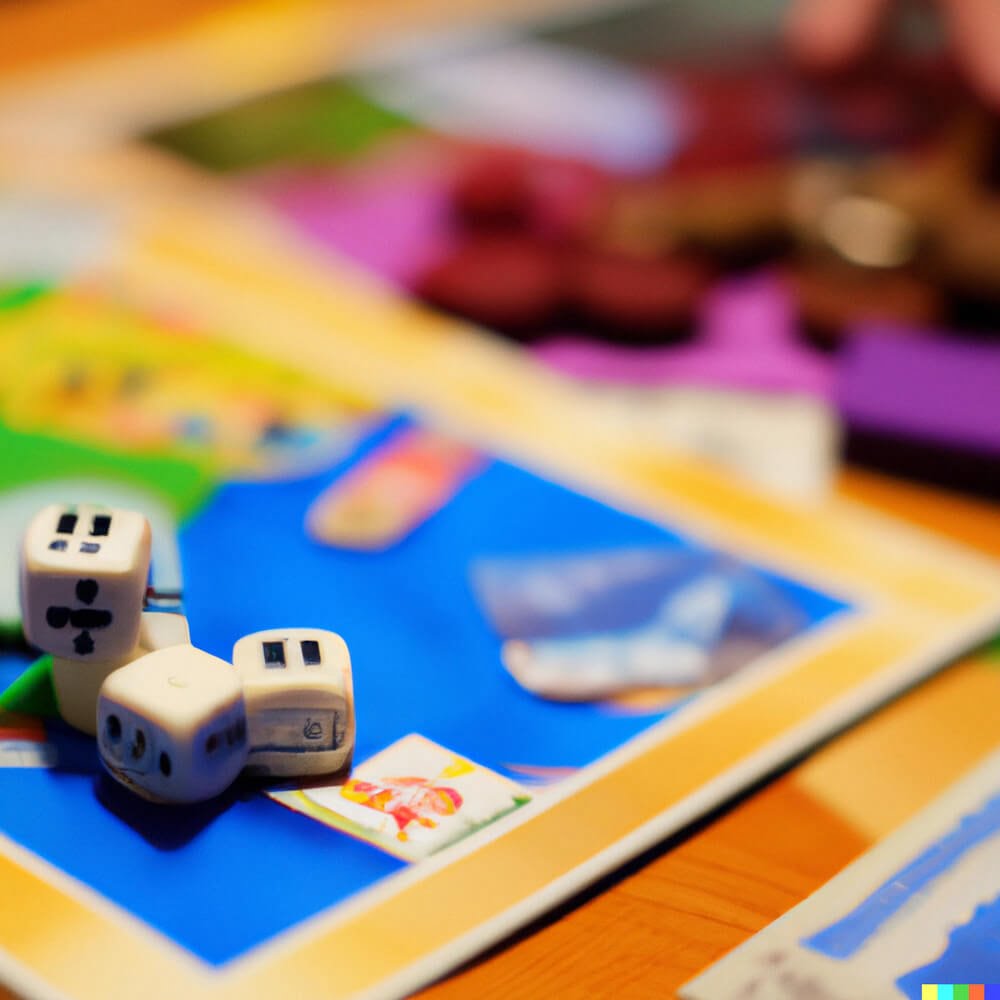Battleship, the classic board game that has captured the imagination of players for generations, has become a staple in the world of tabletop gaming. With its simple yet strategic gameplay, Battleship has earned a special place in the hearts of enthusiasts. The game’s enduring popularity is a testament to its timeless appeal and ability to bring people together for friendly competition. But just when exactly was this beloved game first introduced to the world?
The history of Battleship is rich with fascinating details that trace back to its origins and early iterations. From its humble beginnings to its significant milestones, the evolution of Battleship reflects not only the changing landscape of board games but also the enduring fascination with naval warfare. Delving into the history of this iconic game provides valuable insight into its cultural impact and lasting legacy.
At the heart of Battleship’s creation lies an inventor whose inspiration and vision gave rise to this beloved pastime. Exploring the journey of the game’s creator offers a unique perspective on how Battleship came to be and sheds light on their original vision for this innovative form of entertainment. Understanding the process behind developing Battleship adds depth to our appreciation for its enduring appeal.
History of Battleship
The classic board game Battleship has a rich history that dates back to the early 20th century. Its evolution and enduring popularity have solidified its status as a beloved pastime for generations of players. The origins of Battleship can be traced back to various forms of pen-and-paper games that involved similar naval combat concepts. These early versions eventually led to the development of the iconic board game that is known today.
Early Beginnings
Battleship can be traced back to the pencil and paper game known as “Broadsides, the Game of Naval Strategy,” which was first published in the 1930s. This game laid the groundwork for what would eventually become Battleship, with players strategizing their fleet formations and attempting to guess the location of their opponent’s ships. The concept of naval combat games had been around for some time, but it was not until later developments that this particular game gained widespread popularity.
Significant Milestones
One significant milestone in the history of Battleship was its adaptation into a commercial board game by the American toy company Milton Bradley (now known as Hasbro). The company released the first version of Battleship in 1967, featuring plastic pieces and a more visually appealing design.
This marked a turning point for the game, as it became more accessible to a wider audience and gained traction as a popular choice for family game nights and social gatherings. Over the years, there have been various editions and adaptations of Battleship, each adding unique elements while staying true to the core gameplay mechanics that have made it an enduring classic.
The evolution of Battleship from its humble beginnings to its present-day status as a timeless favorite showcases its lasting impact on gaming culture. As technology continues to shape entertainment experiences, Battleship remains a steadfast reminder of the simple pleasures found in traditional board games.
The Inventor
The classic board game Battleship was invented by Clifford Von Wickler in 1931. He initially developed the game as a pencil and paper game, which he called “Broadsides.” The concept had similarities to the classic strategy game, with players drawing the grid on paper and then calling out coordinates to locate their opponent’s fleet. The game evolved over time and was eventually released as a plastic board game under the name “Battleship” in 1967.
The inspiration behind the creation of Battleship is often attributed to traditional naval combat and strategy. It is said that Clifford Von Wickler was inspired by his own experience serving in the Navy, where he learned about naval warfare tactics and became fascinated with strategizing to outmaneuver opponents. This interest led him to create a game that replicated some of the elements of naval combat in a simple yet engaging format.
In developing the game, Von Wickler sought to capture the essence of naval warfare by incorporating strategic thinking and decision-making into an entertaining pastime. His goal was to provide players with an immersive experience that allowed them to feel like they were commanders of their own fleets engaged in battle. With its simple mechanics and emphasis on strategic thinking, Battleship quickly gained popularity among enthusiasts of board games and strategy games alike.
| Battleship Inventor | Clifford Von Wickler |
|---|---|
| Inspiration for Development | Traditional naval combat and strategy |
| Year of Initial Release | 1967 |
The Initial Release
The classic board game Battleship was initially released in 1967, marking the beginning of its significant impact on the gaming industry. With its unique blend of strategy and suspense, Battleship quickly became a beloved pastime for families and friends. Its release during the late 1960s contributed to the game’s popularity, as it provided an entertaining and engaging experience during a time of social change and cultural shifts.
During its initial release, Battleship garnered attention for its innovative gameplay and competitive nature, attracting a wide audience of players. The game’s success led to various adaptations and international versions, further solidifying its status as a timeless classic. Additionally, the initial release of Battleship set a new standard for board games by offering a combination of luck and skill that appealed to both casual players and dedicated enthusiasts.
The impact of Battleship on the gaming industry at that time can be seen in its widespread recognition and continued relevance. The game’s initial release paved the way for future innovations in tabletop gaming, inspiring generations of players around the world to engage in strategic naval warfare on the game board. Overall, the year of its initial release marked a turning point for Battleship, establishing its enduring legacy in the gaming landscape.
- List item 1
- List item 2
- List item 3
Gameplay and Rules
Battleship is a classic board game that has been enjoyed by players of all ages for decades. The gameplay of Battleship is simple yet strategic, making it an engaging and challenging experience for players. In this section, we will provide a detailed explanation of how the game is played, including the rules and strategies for winning.
Gameplay
Battleship is a two-player game where each player has their own grid on which they arrange their fleet of ships. The objective of the game is to guess the coordinates of your opponent’s ships and “sink” them by landing a hit on each part of the ship. The first player to sink all of their opponent’s ships wins the game.
Rules
The game begins with each player arranging their ships on their grid in any position they choose, as long as the ships do not overlap or hang off the edge. Players take turns calling out coordinates on their opponent’s grid to try and hit their ships. Hits are marked with red pegs, while misses are marked with white pegs. Once a ship has been completely hit, it is declared sunk.
Strategies for Winning
To win at Battleship, players must use strategic thinking and deduction to determine the locations of their opponent’s ships. It is important to spread out your guesses to cover as much ground as possible and keep track of previous guesses to avoid repeating them. Additionally, paying attention to patterns in your opponent’s guesses can help you narrow down the possible locations of their remaining ships.
By understanding and implementing these rules and strategies, players can engage in intense battles of wits and skill while playing Battleship, making it a timeless and beloved classic board game.
Cultural Influence
Battleship, the classic board game, has managed to leave a lasting impression on pop culture since its inception. Its influence extends beyond the tabletop, making appearances in various forms of media such as movies, television shows, and even literature. Here are some notable examples of Battleship’s cultural impact:
- The classic board game made its big-screen debut in the 2012 action-adventure film “Battleship,” directed by Peter Berg. While the movie did not directly follow the gameplay of the board game, it incorporated elements of naval warfare and strategic battles that paid homage to the original source material.
- Battleship has also been featured in several episodes of popular television shows, including “The Simpsons” and “Stranger Things.” These references serve as a testament to the game’s enduring popularity and recognition across different generations.
- Furthermore, Battleship has inspired various literary works, showcasing its impact on pop culture beyond visual media. In books and comics, it has been used as a motif for themes such as strategy, competition, and conflict resolution.
The game’s ability to permeate different forms of entertainment underscores its timeless appeal and status as a beloved classic. Whether it’s on the silver screen or within the pages of a book, Battleship continues to hold a special place in popular culture. As such, its legacy remains unfazed by the passage of time and will likely continue to inspire future generations.
Legacy and Continued Success
| Year | Event |
|---|---|
| 1967 | Battleship was recognized as “Game of the Year” by the industry’s leading publication, Games & Puzzles. |
| 1977 | The electronic version of Battleship was introduced, adding a new dimension to the classic game. |
| 2012 | The Battleship movie, inspired by the board game, was released in theaters and received mixed reviews from critics. |
Battleship has certainly left an indelible mark on popular culture and continues to be embraced by fans of all ages. Even with its humble beginnings in the early 20th century, Battleship has managed to maintain its relevance and captivate new generations through various re-releases and adaptations.
In 1967, the game was recognized as “Game of the Year” by Games & Puzzles, solidifying its status as a beloved classic. This honor not only validated the game’s enduring appeal but also propelled it into mainstream recognition.
In 1977, Battleship took a technological leap with the introduction of an electronic version, transforming the way players engaged with the game and appealing to a more modern audience. The incorporation of electronic components added an exciting dimension to the traditional board game format and showcased its adaptability over time.
Furthermore, in 2012, a major motion picture based on Battleship was released in theaters. While the film received mixed reviews from critics, it underscored the significant cultural impact of the game and its ability to transcend traditional gaming boundaries.
The legacy of Battleship lives on not only through its original incarnation but also through these innovative re-releases and adaptations that continue to attract players worldwide. With each iteration, whether in physical or digital form, Battleship maintains a special place in popular culture and stands as a testament to enduring success within the gaming industry.
Conclusion
In conclusion, Battleship has proven to be a timeless and beloved classic board game that has captured the imagination of players for decades. From its origins as a pencil and paper game to its evolution into the popular board game we know today, Battleship has left an indelible mark on the gaming industry. The strategic gameplay, suspenseful tension, and simple yet engaging concept have contributed to its enduring appeal among both casual players and gaming enthusiasts.
The impact of Battleship on the gaming industry cannot be overstated. Since its initial release in 1967 by Milton Bradley Company (now Hasbro), Battleship has become a staple in the world of board games and has inspired numerous adaptations, including electronic versions and online games. Its influence has extended beyond the gaming arena, with references to Battleship appearing in movies, television shows, and other forms of media, further solidifying its place in pop culture.
As we reflect on the historical significance of Battleship, it is clear that this iconic game continues to hold a special place in the hearts of players around the world. Its ability to endure through generations speaks to its timeless appeal and universal enjoyment.
With its storied past and continued success, Battleship remains a beloved classic that exemplifies the enduring power of traditional board games in an ever-evolving gaming landscape. Whether played on a tabletop or on a digital screen, Battleship’s legacy is sure to endure for years to come.

I love playing all kinds of games – from classics like Monopoly to modern favourites like Ticket to Ride.
I created this blog as a way to share my love of board games with others, and provide information on the latest releases and news in the industry.





